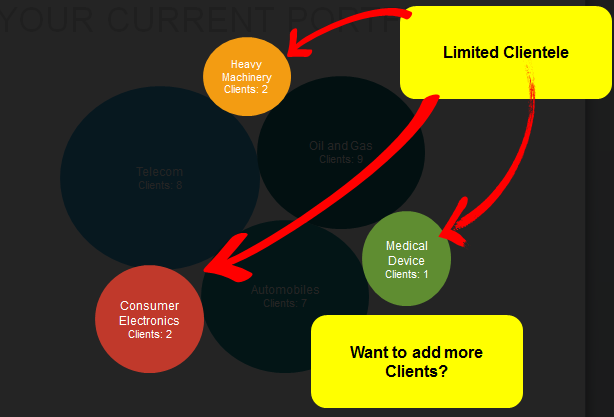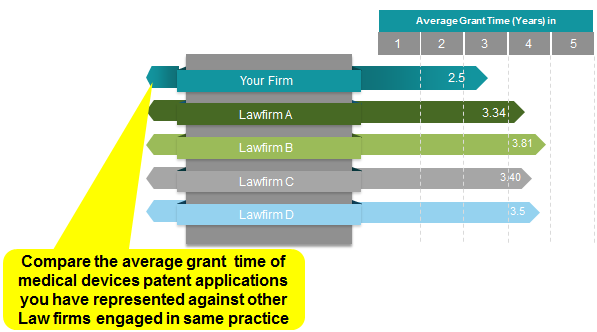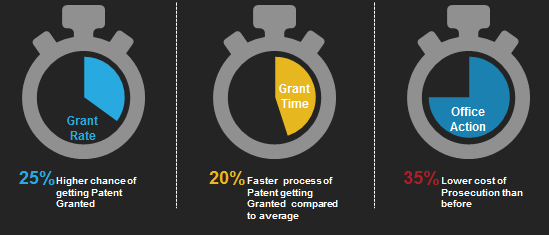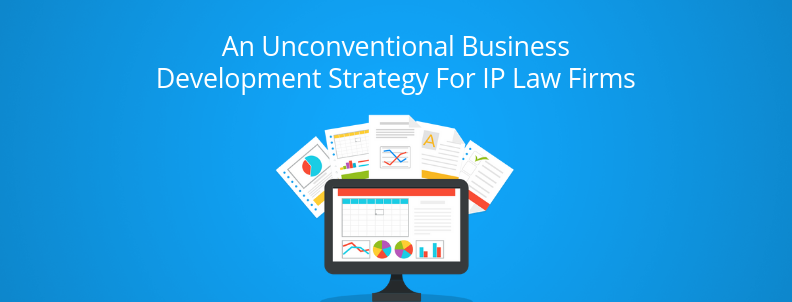
In IP law firms, partners often face the daunting responsibility of building and implementing a business development strategy for the firm. These ‘Business Development’ (BD) activities are highly important for the firm too, as they contribute to the firm’s growing demand for additional revenue each year.
However, for most patent prosecution attorneys, whose career has mostly revolved around drafting/ filing applications and responding to USPTO examiners, being asked to perform BD for new opportunities would be like groping around in the dark for a light switch, in a room s/he is entering for the first time.
What could they do?
Well, in the age of data and analytics, making a business development plan is not as difficult as it seems. You can use simple analytics to identify and attract potential leads and even convert them. Excited to find more? Let me walk you through this strategy.
We have created a whitepaper which contains three crucial strategies:
- How you can spot your differentiation factor
- Strategies to get more business from existing clients.
- How data can help you build more clients for your IP law firm
We have also done one webinar on the same. You can get this whitepaper for free by just filling this tiny form below:

How can a patent prosecution attorney use simple analytics to attract potential clients?
Disclaimer: This might be a rather unconventional method compared to the traditional BD methods followed by law firms. However, you didn’t get here to learn about a traditional method in the first place, so let’s get started.
STEP 1: Map out your current patent filing portfolio
The first step in the Business development process is to find out where you stand – The technology domains and art units where you/your firm have filed a majority of patents. Once done, you could identify various opportunities you can follow from your current position.
The holistic view of your/your firm’s patent filing experience in different technology areas could help you in making informed decisions. You can find out the saturated areas and areas that are unexplored – where the development process could be carried out.
Let’s take an example to drive the point home.
Consider the below visual that depicts a firm’s patent filing experience in various domains and distribution of clients for the same.

You would notice that while the firm has been filing a large number of patents in few domains (owing to the higher number of clients), few technology domains are being neglected and have a very low number of patent filings.

These areas with ‘limited’ clientele’ indicate an OPPORTUNITY lying ahead to add new clients to your clientele.
How exactly? – You ask.
Pretty simple logic. The other technology areas have a glut of clients, and additional business development activities in those areas could entangle you in a complicated mess of Conflict of Interest (COI) issues. Hence, the best way to avoid compromising your relationship with your existing clients, and also avoid COI issues would be to steer clear of those technology domains altogether. You don’t run a similar risk in the opportunity areas, given the limited clientele in the same. Once you have identified the technology areas, time to get to the next step.
Complimentary strategy: A way to increase billing hours by helping your client spot new areas where patents could be filed.
STEP 2: Identify potential leads in these domains
The next step would be to identify potential leads.
Who are these potential leads? – You ask.
These are companies that:
- have been showing a bleak track record of handling filings at a PTO for quite some time,
- with a low grant rate,
- very high time to grant, and
- a greater number of office actions.
There are greater chances of converting these companies since they need assistance the most to lower the time taken to grant and increase the grant rate.
How could you help them? – You ask.
As I mentioned, we live in the age of data and analytics. A number of analytics tools based on the USPTO PAIR patent filing data have been coming up in the market. These tools can help gather such data. GreyB’s Examiner Analytics Tool, for example, is one such tool that provides users with reliable statistics on patent prosecution events at the USPTO.
More on it, in a minute. But first, let’s talk about the third step.
Complimentary strategy: A way for attorneys to have solid reasons for multiple connect with clients
STEP 3: Check for Conflict of Interest
Relationships with existing clients may get compromised when an attorney or a firm works for a competitor. An existing client may fear confidential aspects of his technology falling on a competitor’s hand. Further, he may have fears of losing competitive edge to his competitors due to the knowledge acquired by an attorney from his projects getting unconsciously used in patent filing procedures of a competitor.
Because of these reasons, IP attorneys need to carefully evaluate new business opportunities, for any conflicts of interest risks a new relationship may have on existing client relationships.
One possible way to check COI would be by analyzing the USPTO Office actions to see if any of the potential client’s patents have been cited during prosecution of patent applications of your existing client – Company X.

If there are any possible COIs on your list, they should be immediately terminated. A lot of companies above could pose COI issues if you convert them as a client. Johnson & Johnson and a few others, however, would not pose a similar problem and could be good leads for your BD activity.
Again, this analysis can be facilitated by any of the analytics tools based on USPTO PAIR patent filing data.


STEP 4: Attracting Potential Client
The last and most important step in this unconventional business development strategy for an IP law would be to attract new clients without sounding like a salesperson.
How?
Let your patent prosecution track record talk for you. Using analytics based on USPTO PAIR records, you can showcase how your firm’s patent prosecution track record (with respect to grant rate, grant time, number of amendments, number of office actions, etc) fares against the company’s current track record, and against other competing law firms in the same technology domain.
Benchmark your firm against others


Display your unique selling point by making advantages of working with you evident to the client.
In any business, a winner always has a differentiator that sets him apart from the crowd. That differentiator could be a strategy, a tool, their experience, or the like.
Further, having such a differentiating factor plays a vital role when you fight and beat a more experienced competitor.

We are living in times where the number of years spent working in a domain doesn’t matter anymore. What matters are the results, in short, the numbers. The best part is you could always turn the number in your favor by monitoring your performance, studying metrics that impact them and taking actions accordingly. GreyB’s examiner analytics tool is one complete package that could help you set apart from the rest. Want to know more? Get in touch and we’ll get back to you with a link to a demo of the Examiner Analytics tool at work.

STEP 5: Repeat.
As simple as that.
Authored By: Lindce Sabi Varghese, Senior Associate, IP Solutions.
Related Strategy: A 3-part series on Smart Business Development Strategies for IP Law Firms










